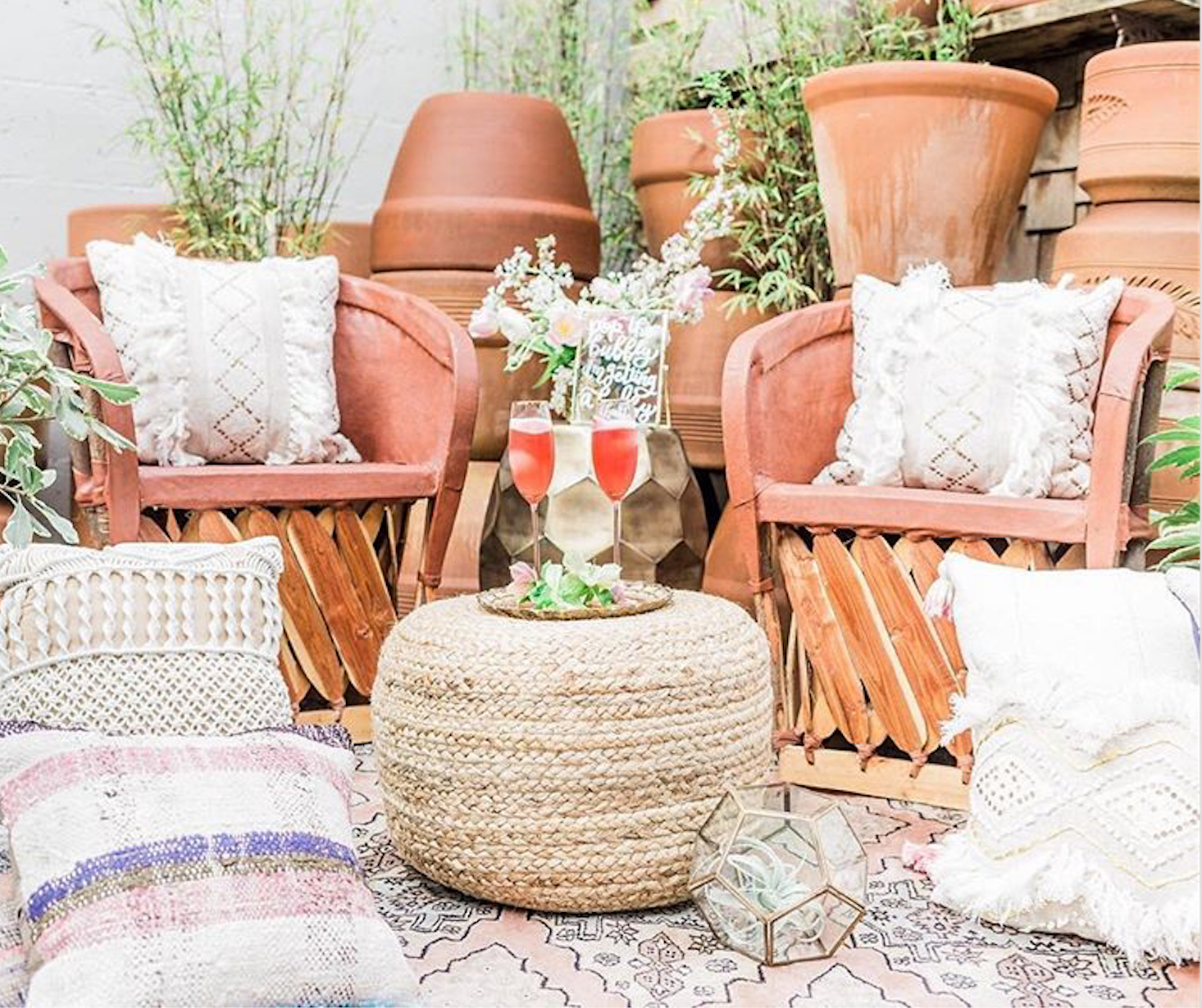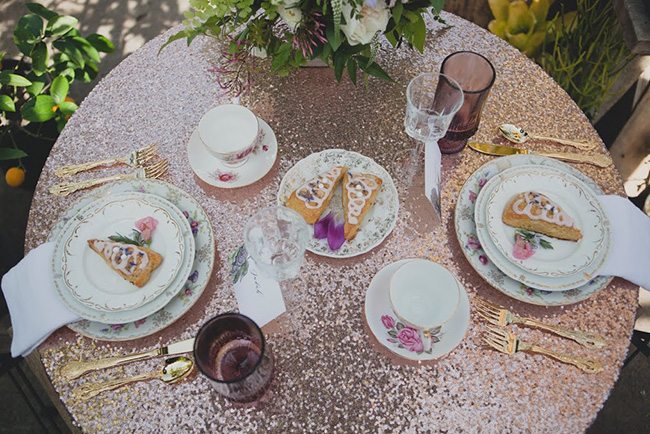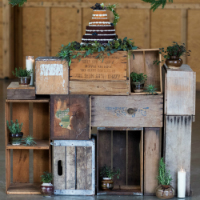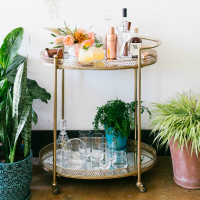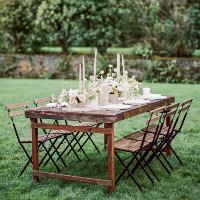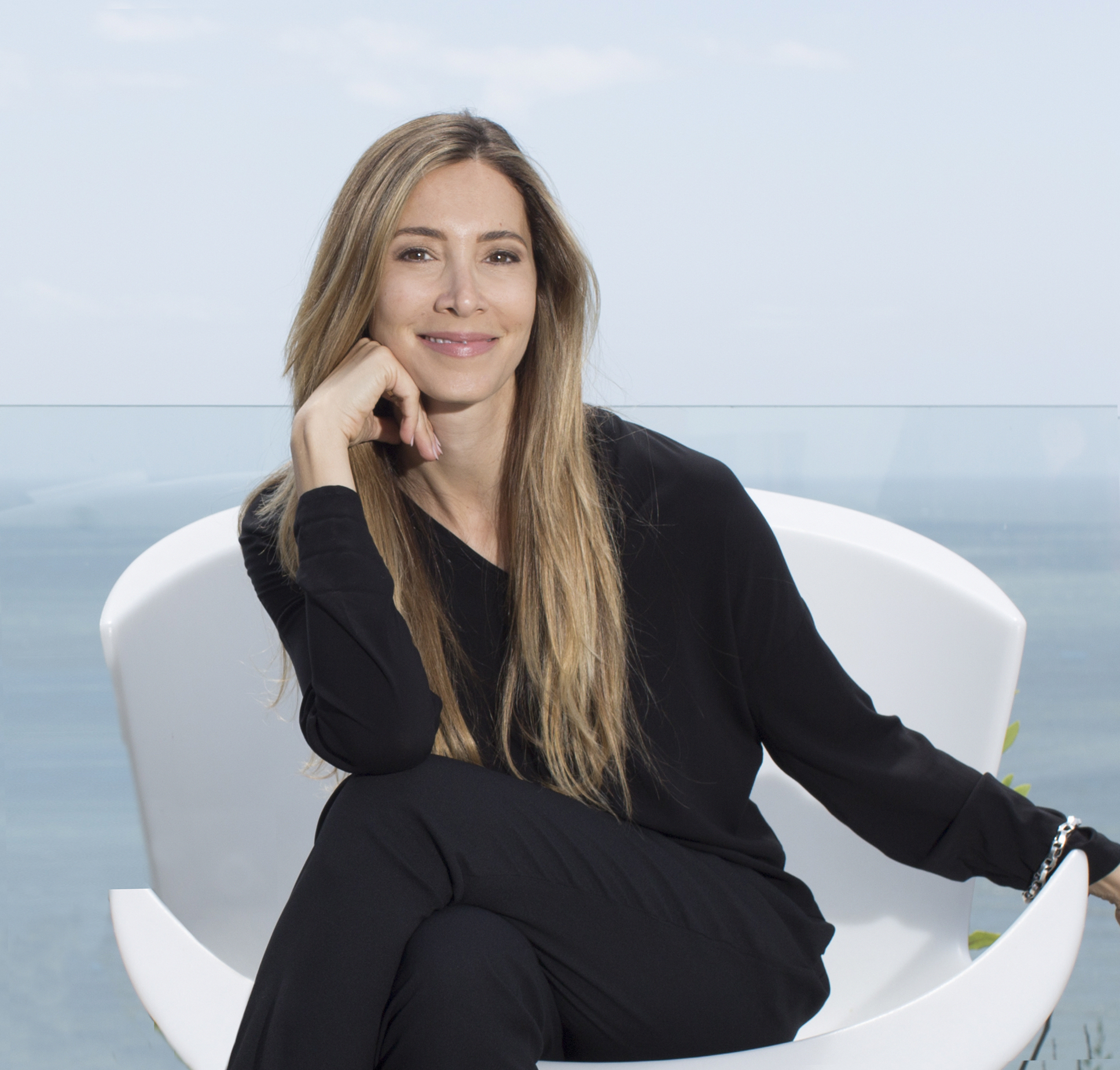4 Simple Ways to Live an Eco-Friendly Lifestyle (Even If You're Too Busy)
Let's get green.
Photo: Daria Shevtsova for Pexels
Did you know 8 million metric tons of trash are dumped into the ocean each year?
This trash also kills around one million marine animals and birds every year. Not a day goes by without pollution of some kind. Whether it’s the fumes from cars, the plastic bag holding our PB&J sandwich, the cheap graphic tee you bought last week, or even the plastic water bottle you bought with your salad on your lunch break.
But no matter how busy your days are, everyone can (and should!), find the time to care a little more about this place we call home. It’s time to do our part to reduce this toxic waste and find smarter ways to keep our planet clean and safe. Not sure where to start? Here are a few tips to kick off an eco-friendly lifestyle, even if you’re busy.
Be Mindful of Fast Fashion
Clothing is an essential part of our everyday life. What we pay for clothing, how we feel in it, and how long it lasts are all important factors to keep in mind when purchasing clothes. Fast fashion is inexpensive clothing produced rapidly by mass-market retailers in response to the latest style trends. This allows companies to create cheaply made clothing that will likely not last long for the consumer—ever wash a shirt once and the thread string comes out, or it shrinks three sizes?.
Sustainable fashion is the process of fostering change to clothing products towards greater ecological integrity. There are several ways to become a trendsetter without giving into fast fashion and its grand marketing scheme. A string of companies are popping up around this sustainable drive offering easy ways to consign fashion and buy used clothing—hint Poshmark, thredUP, The RealReal, Vestiaire Collective, Depop, and eBay. They are all doing their part to promote sustainable fashion at an affordable, not cheap, price. Buying secondhand and investing in clothing that is high quality and made with organic and durable fibers are the best ways we can support this sustainable clothing initiative. Did you know fashion is the second most polluting industry in the world behind oil? Let’s change that, ladies.
Invest in Sustainable Food Storage Containers
Work life consists of various foods and snacks to get you through your day. This includes plastic containers, plastic zip-top bags, maybe even plastic bags as lunch bags. Look for food containers that have silicone lids instead of plastic. Silicone is long-lasting, free of all estrogen-mimicking chemicals that are usually found in plastics, doesn’t contain petroleum, and is not harmful to the environment.
Stainless steel is another noteworthy material to use for storing food. People often forget that stainless steel is a highly recycled commodity. According to the International Stainless Steel Forum, the rate of stainless steel recycling has increased to 90% while plastic recycling remains at 1% with most remains dumped into a landfill. If you tend to bring a big lunch everyday, you might want to purchase a reusable lunchbox. This gives you the freedom to keep all your food in place and cold, while also reducing plastic bag use.
So, next time you make a Target run, take a peek at the containers section to make your ecological footprint a little less toxic.
Bring Your Learnings Into Your Building
Most office and apartment buildings should be following all recycling rules no matter what, but if you’re in a building where they don’t pay attention, then now is the time to inquire.
Contact the building management company and ask them any questions you may have about how to recycle properly. Make signs, set up bins, and do your part to educate your fellow employees and residents on recycling and how to do it the proper way. Provide lists of resources for people looking to get rid of plastic bags, old toys, clothes, food, or even electronics.
Print out recycling guidelines with handy pictures so people can learn at-a-glance how to appropriately dispose of their trash. Talk to your building manager about implementing these recycling guidelines and ask if you’re able to hold an info session to teach employees or residents about the do’s and don’ts of recycling (once social distancing restrictions are lifted). The more people we educate, the better our quality of life will be.
Reduce Plastic Use Where You Can
We all know plastic is the big criminal here. One of the biggest actions we can take is to stop purchasing plastic water bottles, and particularly, plastic water bottles in mass quantity. Not only does this waste affect our marine life but can also affect public health by spreading diseases and other illnesses as a result of burning waste.
In 2010, Sarah Kauss founded the company S’well with an important mission in mind. Kauss wanted to rid the world of plastic bottles. She molded fashion and function together to create a product that consumers couldn’t resist. The bottles are designed to keep your beverages cold for up to 24 hours and hot for 12 hours. S’well is a woman-owned company with a strong and clear vision to make the world a cleaner place.
Instead of polluting the Earth every day with more plastic water bottles, reuse your own cute and sustainable water bottle that is entirely yours (and you’ll save so much money). You can take it with you pretty much anywhere you go. It’s the easiest way to make the world a cleaner place.
About the Author: Abbey Adams currently works at a digital marketing company while also maintaining her music blog, blondieandthebeat.com, of six years. Throughout her time as a freelance writer for a women’s magazine she’s learned to share every story and empower as many women as possible. You can usually find her writing in bed binging “Sex and the City” (for the 10th time) or at the gym sweating out her anxiety on the stairclimber.
This story was originally published on July 6, 2019, and has since been updated.
MORE ON THE BLOG
Slow Stories: The Big Picture—The Relationship Between Content and Sustainability
Slow Stories: Part 2
This is the second installment in a series on slow content. See the first installment here.
For most modern marketers, content has become an essential component of their overarching digital strategy. But with content's increasingly present role in both our personal and professional lives (in tandem with an often complex social and political landscape), the conversation is now shifting in a thoughtful direction toward considerations of its role in social epidemics surrounding mental health, the evolving news climate, and more.
Since launching the Slow Stories podcast, I've spoken with leading brand-builders who have collectively alluded to the fact that our current consumption habits are forcing new ways of thinking about content's relationship to sustainability. And when looking back at our first season as a whole, my collective takeaway from these conversations revealed three primary elements that make up the slow content movement today:
1. Slow content provides value and purpose
Beyond aesthetics and virality, many of our podcast interviewees defined slow content as being something that offers true value in a densely saturated landscape. Understanding a piece of content's purpose and how it will serve an audience—whether through educating or inspiring—gives it a better chance of leaving a long-term impact beyond just fleeting inspiration in our day-to-day scrolling.
2. Slow content considers data and fact-checking
The immediacy that social media and self-publishing affords us has presented new challenges in how we detect what is real and what is being obscured. To create a credible storytelling environment, our interviewees contend that a return to a slower, well-researched process is critical for all conscious storytellers.
3. Slowing down our relationship to content makes us nicer, more well-rounded people
Finally, a lot of my conversations with these incredible women signaled that there's not necessarily a need to create content all day, every day. As we all work to discern what it is we want to say (and consume), it is equally important to create space to take a step back, recharge, and connect with what drives us offline just as much as what inspires us online.
With these pillars in mind, today's article is going to further expand on the importance of thinking about creating content through a sustainable, big-picture lens. If you find yourself struggling to think about or implement "slow" content in your own strategies, let's look at a similar movement like slow fashion.
At their core, slow fashion brands are commonly known for championing ethical and sustainable production practices, educating consumers on how their pieces are made, and rewriting the rules regarding social and business expectations surrounding their brands. As a result, companies like this have slowly begun to transform the greater fashion industry by creating new standards that are more conscious of both the modern brand builder and consumer's needs. The content and marketing space can surely borrow from these efforts to create a more sustainable landscape for storytelling professionals on both sides of the equation. Below, I've listed a few considerations for brands and content creators to ask themselves—and each other—to enact more sustainable, mutually-beneficial opportunities to create content that has longevity.
1. Set the expectations
The same way a fashion brand would set standards regarding their production process, a content creator can similarly follow suit and establish their own set of best practices when taking on projects. Part of this exercise is educating brands about the importance of ethics—which extends to proper compensation, creative resource allocation, and so on.
2. Ensure consistency and communication
As I mentioned in last month's article, setting yourself up for success in the slow content space begins by laying a long-term foundation in collaboration with your team or client. Part of this is not only communicating what resources you need to bring the content to life, but further educating your team on how it fits into their big picture brand story and mission. When creating enduring content for a brand of any size, it is essential to discuss the end-goal, and what elements must be considered to bring it all to life in an on-brand way. That is where tools like brand books or guidelines come into play to ensure that all relevant details are considered during the production process.
3. Champion the investment in content—and the creators needed to bring it to life
At times, it can be hard for brands to justify the additional spend on custom content (especially when UGC is alive and well). But going back to our slow fashion example, whenever I've found myself in a new business meeting, I often compare the investment in content to investing in quality-made clothing: I'm purchasing a well-made garment and supporting a brand I love as a result. Not only does this demonstrate an interest in championing the brand as a content creator, but it often helps contextualize why putting resources into original (and quality) content is vital for the brand's business goals—and on a more human level—sustaining the support of/relationship with content collaborators.
In a world where trends, expectations, and platforms can change in an instant, thinking about sustainability's role in content isn't always an easy task. I hope this article provides a framework to have necessary conversations with your clients or team to establish systems and tools that allow you to create content that is thoughtful (and provides value) for years to come.
For more musings on slow content, I invite you to follow along with the Slow Stories podcast on iTunes and my monthly column here on the Create & Cultivate blog!
Rachel Schwartzmann is the Founder and CEO of The Style Line LLC. She created The Style Line in late January 2011 via Tumblr and has fostered The Style Line’s brand in its growth since then. Rachel has been featured in esteemed sources including Forbes, Refinery29, and MyDomaine and has also spoken at Create & Cultivate and Columbia University on establishing a unique brand point of view and entrepreneurship. On October 1, 2015, Rachel took The Style Line in a new direction as a boutique content company with the introduction of its slow content agency CONNECT(ED)ITORIAL.
MORE ON THE BLOG
How a Burning Man Honeymoon Led This Founder to Change Her Biz Model
Total eclipse of the plan.
Like many new couples, after Portland-based event rental company Something Borrowed founder Lane Bigsby married the love of her life, they went on a honeymoon. But instead of heading to a tropical destination or on a romance-and-baguette-filled trip to Paris, the freshly wedded duo headed to the Black Rock Desert of Nevada.
Yes, that's right. They went to Burning Man, honeymooning at the mecca of anti-capitalism. But Bigsby came home with a renewed idea for her biz.
So, we caught up with the founder to chat humble beginnings, what she notices when she first walks into a room, and why sustainability will always be a part of her biz.
What inspired the beginnings of Something Borrowed?
When I was planning my wedding, I noticed there was a lack of decor that was unique and less traditional. I scoured the area trying to find exactly what I needed for our small wedding, and after failed attempts to find anything I could rent, I ended up sourcing vintage and reclaimed items. I had thought of the idea of starting a rental business, but kept going back and forth with myself as I had just started a corporate job that I thought was going to be "the one" (aka my career job). After our Burning Man honeymoon, I came back with a much clearer sense of what it is I wanted to do with my life and working for corporate America just didn't feel as authentic and meaningful as it once did.
How did you being to compile your stock? Did it start with one piece? Multiple?
Our hand-curated collection started off small, with the left over wedding items from my own wedding (vintage china plates, rustic wood crates, antique mason jars, etc.). It felt like such a huge leap to branch off into furnishings and upholstered seating, which I did about nine months later. But, I quickly saw the demand for the few furniture pieces we had and I knew that was the direction to take the business, especially considering there was no one else doing what we did at the time.
Was sustainability always part of the Something Borrowed story and what inspired that route?
Sustainability has always been at the core of Something Borrowed. After moving to Portland from a five year stint in Phoenix, I wanted to educate myself with local recycling regulations. Phoenix left me feeling very wasteful and I knew I had to make personal changes. Being raised in a very rural part of Alaska where we literally "lived off the land", instilled in me how much we can get by with so little. I went through a 6-week training program with the City of Portland, and later became a certified Master Recycler. My own wedding produced less than one small grocery bag of waste as my rule was that anything we needed for our wedding was to be easily recyclable, reusable, and repurposed, such as my wedding dress which was made from old dresses and fabric scraps. Sustainability is not only part of my personal beliefs, but one of our core values and has earned us a Gold Certification with the City.
No matter what way you swing it, events produce a lot of waste. There's a lot of one-time usage. But you create beautiful environments AND care about the environment. What are some easy switches we can make when throwing an event?
Whenever possible, work with vendors who make sustainability a priority. Such as caterers or florists who source from local, organic farms. In fact, you can ditch the flowers all together and instead opt for longer lasting potted plants, which still help bring an event to life but are not ditched after one use. Instead of paper signage, opt for something cooler such as acrylic or treated wood which can be written on and reused many times. When you're looking to source, look to your local community first, versus buying into the temptation of a big box store who may have items trucked or shipped in from out of the country.
"When you're looking to source, look to your local community first."
Tweet this.
What are some ways you encourage your customers to be more eco-conscious?
We always try to offer suggestions on ways our clients can repurpose or use what they already have. We work with a lot of clients for their wedding and one tip we recommend is to reuse floral from your ceremony and incorporate it into your reception. Also, instead of using throw-away items such as plates and cutlery, opt for durable dishware. If cost is an issue, opt for basic place settings which are less expensive, but dress up your table with cool, colorful glassware or table linens that can help pull your look together so that it's cohesive.
Portland and the PNW are definitely a city leading this charge of sustainable. What is it about being in Portland that has inspired you to be even better?
We are surrounded by nature... the coast to the West and mountains to the East. One of the countries largest urban forest sits directly across the river from our warehouse and we want to do what we can to preserve its natural beauty. The City makes it easy to be as green as possible, offering programs and services to residents and businesses wanting to do their part, but who may not know where to start.
What are a few secret tricks of the trade for creating a beautiful and memorable event?
Excite the senses! You must not only create a visibly pleasing space with decor and lighting, but don't forget about the music, drinks, food and scents. Also, put effort into the theme of your event as this will spark the interest of your guests. It allows them the opportunity to step out of the ordinary and mundane, and into the extraordinary.
What is the most important part of an event?
The atmosphere you create for your guests. Orchestrate an environment that will WOW your guests, leaving them talking well after the party has ended. This might be curated decor that speak to and enhance your brand, interactive activities giving guests something to do, or creating swoon-worthy scenes that are so picture-perfect, you can't help but want to snap a photo to share with others which in turn creates buzz for your next event.
What is your favorite part of an event?
I love seeing how a blank slate can be transformed into a beautifully stylish space. You put in the hard work, plan for months, hand select your vendors and then to see it all come together is priceless!
When you walk into someone else’s event what is the first thing you tend to notice?
I tend to notice the details first. Does the scene fit with the brand or message of the event? Are there cool aspects that you may not have seen yet? People crave the unique and interesting and when I see this, I know the organizers put a lot of effort into truly understanding who their guests are and what vibe they want to create.
Photo credit: Something Borrowed Site
MORE FROM BLOG
A Day in the Life: From Auto Designer to Sustainable Fashion Boss
Designer Vicki von Holzhausen grew up next to the Art Center College of Design in Pasadena, a school she calls, "one of the best for design." In high school she attended their industrial design classes where she discovered a love for the automotive. "Cars," von Holzhausen says, "are basically the most intricate and impactful products one can design so I immediately gravitated to them." She ended up attending Art Center College, in CA as well as on their European campus, where she was exposed to the German automakers which lead to an award-winning career at Mercedes in Germany.
Though it's not a world inhabited professionally by many women, von Holzhausen says, "the interesting part is that 85% of car purchasing decisions are made by women so there should be more women in it. I think it's a matter of exposing female design students." She's thankful she was exposed at a young age. She's also married to Tesla chief designer Franz von Holzhausen, who certainly knows a thing or three about sustainability.
But as of 2015, the designer made the full time switch from automotive design to handbag designer with the launch of her sustainable Malibu-based von Holzhausen bags and accessories-- product set apart as a result of her time in auto design. As a lifelong career fan of German industrial designer, Dieter Rams, the founder explains that she still abides by many of his design principles. "The ones that resonate with me the most are that good design should be honest, aesthetically pleasing, and environmentally friendly. My goal was to build a brand based on the principle that I believed in: a future-minded approach, timeless style, and sustainability."
"Good design should be honest, aesthetically pleasing, and environmentally friendly."
Tweet this.
With her eponymously named von Holzhausen line she mixes old world techniques with new, both of which she says, "play a role in our sustainable approach." For instance, the brand uses an innovative substitute for leather they call "Technik-Leather," which greatly improves the waste factor. "Since Technik-Leather is created in rolls, unlike cow hides," she shares, "there are no irregular edges, allowing our patterns to lay side by side with little waste between each piece. Our traditional approach has to do with using local talent here in Los Angeles to create our bags and accessories. We also finish all the details by hand since that's the best way to ensure the highest quality. We paint all the edges of each bag by hand which looks amazing and helps ensure longevity."
We caught up with the founder to find out what a day in the life of a sustainable designer looks like, what time she calls it quits, and what she learned from her design school all-nighters.
6:30am – 7am
I wake up early to check any urgent emails and spend about ½ hour going through my daily to do list from the day before. I try and get a workout in on my good days. My quick version is an app called SWORKIT and I do the 20minute core work out. My long version is a H.I.T. class at my local gym, but I can only squeeze those in on days when I have a light morning schedule.
I get a coffee in during my work out. Preference is a black Blue Bottle pour over.
7:30 – 8:30am
Shower & dress. If I’m visiting the factory where I produce the collection, I usually wear my typical uniform like a pair of slouchy jeans and a silky button down shirt or tank and some easy slides. If I’m working at my desk, I usually wear something like a jumpsuit or tank dress with one of our new belts to make it look more put together.
Around 9am
I spend at least 1 hour with emails and figuring out the day. I eat breakfast either at my desk or on my way out the door.
I always try to be flexible when unexpected requests get thrown my way and I’m used to switching up my routine all the time. As a young business, one of the advantages is that we can move quickly without too many issues, so flexibility is a huge benefit.
10am – 11 am
I run errands and try to get to the factory by 11am. We usually review samples in progress 1st and then talk about our weekly production volume and orders in progress.
This can take as little time as ½ hour to as much time as 2 hours depending on the designs we’re working on.
Some days, I meet with other members of my team who work remotely either in the downtown LA Arts District or back on the west side of LA. Those meeting usually revolve around creative direction for photo shoots and marketing strategy.
Other days, I have lunch or coffee dates that revolve around making connections to other entrepreneurs. I’ve learned a great deal from meeting other women who work about the process of building a business.
3pm – 5pm
I’m back at my desk around 3pm to handle any new issues that rise up. Then I try to spend at least a few hours before the end of the day organizing my team for the next few days. I attempt to stay a few steps ahead of everyone so we can meet all upcoming deadlines having to do with things like new product launches, photo shoot production, and website design. There is also an endless amount of paperwork that goes with running a business so I spend a few hours in that department as well.
Most days, I spend at least another hour on various calls during the afternoon since I’m more often than not, sitting at my desk.
6pm
If I have no dinner plans, I take an early dinner with my family and spend time with them until about 9pm.
10pm
I spend at least 1 more hour later in the evening on creative work. It’s a habit I developed as a young designer in school and later in the auto industry when I spent countless all-nighters finishing projects. It’s the time of day with the least amount of interruptions so I take advantage of it.
Images courtesy of von Holzhausen.
MORE FROM OUR BLOG
'Fast & Casual' sweetgreen Is Creating a Sustainable Culture
The healthy fast food co. is kale-ing it.
VP of Brand, Farryn Weiner.
Building healthier communities isn't the type of lofty goal you’d expect out of a “fast food” company. But that's exactly what sweetgreen, the healthy fast casual company started in 2007, is all about. They are committed to changing the way people think about food and having a positive impact on the food system.
The company has five core values, something that VP of Marketing & Brand, Farryn Weiner calls her “North Star.” From keeping it real to making an impact, it’s how they cultivate culture and a work environment that requires all team members to take leadership roles.
Collaborating on a salad with Kendrick Lamar-- they’ve done it. Organizing run meetups via Twitter. Yep. They’re on it. They have education programs and music festivals, like the upcoming sweetlife festival taking place this May. With headliners like Blondie, Grimes, and Flume, the company is building on the universality of food and music. Or as Farryn says, “music and food have an uncanny way of sparking connections, and that’s really what we’re all about.” There is no idea too big or too small to be brought to their table.
We checked in with Farryn to find out how and why she got involved with sweetgreen (it involves taking a literal “leap”), what the “sweetlife” means to her, and the three questions she always asks herself before joining a company.
Can you tell us a little about yourself, how you came to work for sweetgreen, and how its office culture is different than what you’ve experienced in the past?
I met the sweetgreen founders skydiving in Utah and immediately got to know them and the brand. I was drawn to the idea of passion x purpose, obsessed with the mission, and knew I could tell a great story and help make the world a better place by coming to work here. For me, there are three key questions I ask myself before joining any organization:
Are there leaders I can learn from?
Is there a compelling story to tell?
- Is the company solving a problem and therefore, positioned for growth?
sweetgreen provided a resounding yes to all these questions. We’re really in a position to change the way people think about food. We can make healthy eating accessible and help people understand the food system — that’s a huge opportunity, and a huge responsibility.
In terms of culture, everyone at sweetgreen is a leader, and great things are expected of every single person. We’re a growing company but for us, growth is about our higher-order principles and ensuring we can build the kind of company we can be proud of. We think more about our people pipeline than our real estate pipeline. If we don’t have access to the right supply network or people, we will alter our pace of growth to solve those problems so we can execute the right way and be true to our mission. In other words, we think about how to multiply talent and cultivate leaders, and that drives our growth. Growth isn’t about a number, it’s more qualitative and development-focused.
sweetgreen is founded on five core values. Can you talk a bit about making decisions that last longer than you, and why this is a important business model?
Jon, Nic, and Nate developed our five core values in the early days of sweetgreen, and we live by them to this day. Every decision we make, from hiring and real estate to community and food prep, goes through the filter of the core values, and they’re a gut-check to make sure we’re doing the right thing and building an impact brand. We have a perspective and we stand for something — that’s what today’s consumers are looking for, and it’s how we’ve always operated.
Thinking sustainably is one of these core values, and it’s about making decisions that will benefit the company and the community for the long haul. We’re inspiring healthier communities, and thinking sustainably is a big part of that. We take a holistic view of health that includes everything from healthy eating to fitness to education and building community. We connect the dots, we focus on the root cause, and we solve real problems that have a real impact.
What lessons have you learned from working with sweetgreen?
Always have a north star, and rally your teams around it. Having our core values is so intrinsic to our success as a brand. They drive our focus and execution, which builds momentum and fosters growth and development. It’s so simple, yet so powerful.
"Always have a north star, and rally your teams around it."
Tweet this.
How important is collaboration when it comes to creativity within the office?
Collaboration is at the core of what we do — we operate very cross-functionally and non-linearly. This year, we restructured the organization around our key imperatives; every single person at every level has a leadership obligation to drive the business. We’re always testing and learning to understand how to make the sweetgreen experience more seamless and inspiring for team members and customers alike. We have a strong respect of the brand and its mission, and there’s partnership across functions and levels — we’re all here to build a great company and change the way people think about food.
How does sweetgreen choose its collaborations? What goes on in those meetings?
We look for partners that combine style and substance — we’ve collaborated on salads with Dan Barber and Kendrick Lamar because they’ve given us an opportunity to talk about nutrition in a fun way that transcends impact and is authentic to who we are and what we stand for.
People hear fast food and healthy is not top of mind— or on their mind at all. How are you working to change that thinking?
The rise of fast food compromised nutrition for convenience, so “healthy” and “fast” were mutually exclusive for a while. But we’re part of a movement to make healthy eating more mainstream — it’s what today’s consumers crave and demand from food businesses. People are busy, but they want to eat well and be healthy; we’re making that possible.
Along those lines, “sustainable” and “fast” are not always synonymous. How does sweetgreen mitigate being a “fast” food company playing the slow, long, sustainable game?
It’s all about the supply network you build, and we’ve worked hard to build a strong one. We do things differently, and we don’t take the easy route — it’s not easy to source sustainably, but we’re committed to doing so and supporting local food economies.
What does “living the sweet life” mean to you?
For me, there is no “work life balance” — I believe in finding a life you love, inclusive of friends, career, travel, etc. I’ve always wanted to work in an entrepreneurial environment, see the world and apply the lessons I learned around the globe to my career to help me tell better stories for the brand I work on. My sweetlife is a world where all these things coexist, and I bring a lot of energy to all of it.
You’ve written about doing “better than your best,” how do you bring this attitude into sweetgreen’s culture and messaging?
At sweetgreen, how we strive for excellence in everything we do, from sourcing to healthy recipes to leadership. We bring energy to our work to build momentum and work toward our mission. To that end, I’m constantly challenging people around me to do more and better than they think they can. And as the team is moving a million miles an hour on a handful of very different projects, I push the team to be very proud of everything we do, from an email to the sweetlife festival announcement. We have a lean team, so there’s a lot of accountability - we all own our domains, if we don’t take the best care of our channels, who will? We like to say that we “only do dope” — if it’s less than dope, it won’t go out the door.
"We like to say that we 'only do dope' — if it’s less than dope, it won’t go out the door."
Tweet this.
How much fun is it to work at sweetgreen? (Because it seems really fun.)
To be able to wake up and do what you love is one thing, to be able to wake up and do what you love and make a difference is that much sweeter. We’re part of a movement to change the way people think about food and make the world a better place, and that’s a really exciting and fun position to be in.
Arianna Schioldager is Create & Cultivate's editorial director. You can find her on IG @ariannawrotethis and more about her at www.ariannawrotethis.com















